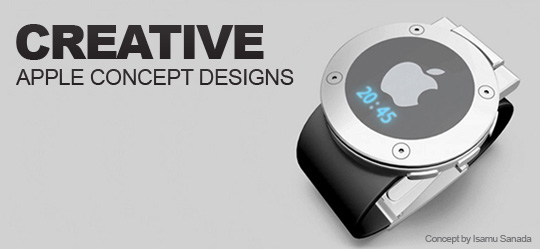Whenever Apple is rumored to be working on a new iPad or iPhone, bloggers immediately begin to speculate about its features. Eager readers are often fooled by slick concept images that show what the new product could look like.
Except these images are entirely fictional, and 100 per cent unofficial. They’re concepts. And they will almost certainly never exist.
Understanding Concept Design
Concept design is more than just a way for designers to express their ideas, although it helps to build a portfolio before looking for design jobs. Concept design a phenomenon in its own right. Graphic designers, illustrators and product designers often work on concept designs as a fun addition to their regular design job.
Concept design isn’t limited to tech: designers also work on concepts for fictional characters, consumer goods, non-existent movies and, most famously, cars. But it’s technology where these images are seen most often in 2013. Mainstream tech blogs love to pore over intricate concepts of fictional goods.
It works both ways. By producing concepts, designers are flexing their muscles and can re-imagine some of the most recognizable products on the planet, reinterpreting the needs of the user and revising the product to suit. And publishers win too. Sometimes, the concepts on show are more interesting than the real thing.
Blogs Love Concepts
Companies like Apple like to keep their cards close to their chest. Given Apple’s reluctance to stray from its tried-and-tested product designs, that’s kind of ironic. But in the savage world of mobile tech, every major player wants to keep its next model under wraps for as long as possible.

That leaves technology publishers with a problem. They can report on rumor, or the latest mysterious patent application, but they need pictures too. And because these companies are so secretive, bloggers normally have no image to go with the story. That’s where concept images help.
Concept design allows designers to play with possibilities, and it gives tech blogs some welcome visual stimulation. Everyone knows that most of the features shown in concepts would never make it to a real world device, but that doesn’t matter: it’s fun to imagine what these brands could do if they were free from the constraints of shareholders, profit margins and production lines.
Prominent Concept Designs in 2013
The best way to understand concept design is to look at some examples. There are plenty to choose from. Concept designers often stray into the world of the fanciful, with concepts presented merely as playful possibilities. Some concepts are built on patent applications filed by big brands, many of which will never see the light of day. Some are simply conjecture.
- Jinesh Shah has published his concept for Android 5 (Key Lime Pie). Little is known about Google’s new operating system, so Jinesh has simply rebuilt Android from scratch.
- The Express newspaper recently pulled together some of the most convincing Apple concept designs ahead of the launch of a new iPhone 6.
- Flexible screens could be all the rage in 2014, and Silicon Angle have pooled the most creative examples of bendy or roll-up devices.
- The Apple iWatch offered an irresistible challenge to concept designer Martin Hajek.
All of these concepts are intriguing. None will surface in the real world. But concept design is a great way for creatives to develop their skills and impress agencies when applying for design jobs.
About The Author: Sam Wright is a writer working with Brand Republic, a marketplace for design jobs.


